
Ceat SportRad Tyres 5,000km Review, on KTM 390 Duke
- Oct 6, 2024
- Views : 1924

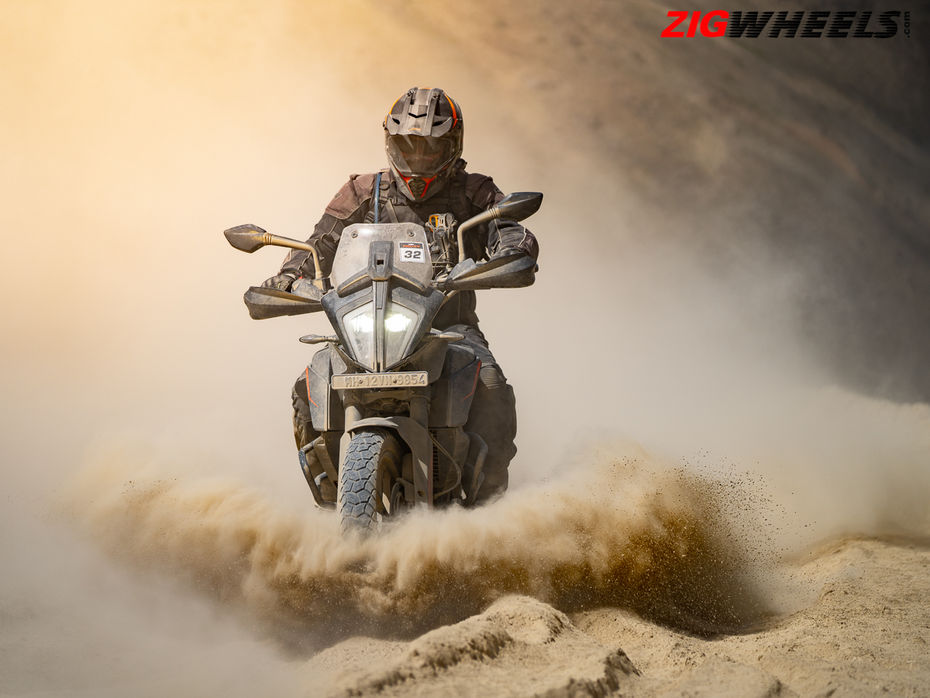
A journey of 1500 kilometres of roads, no roads, talcum powder-fine dust, water crossings, dodgy weather predictions, and multiple high-altitude passes lay before the 24 KTM Adventure riders. The promise of the mythical Zanskar Valley was the reward for taking on this arduous quest. And as I pulled on my gloves on the misty, damp morning from our start point in Manali, there were all the signs that this was going to be one of those rides that you never forget.

For me the route was a familiar one, the trip up from Manali to Leh, then to Pangong lake and then into the Kargil valley, is one I have done multiple times but always in a car. So, doing it on two wheels would be a novel experience. And this novelty was shared with the rest of the group too. For many it was their first trip to the high mountains. And a trip into the legendary Zanskar Valley was one that even I had never experienced before.
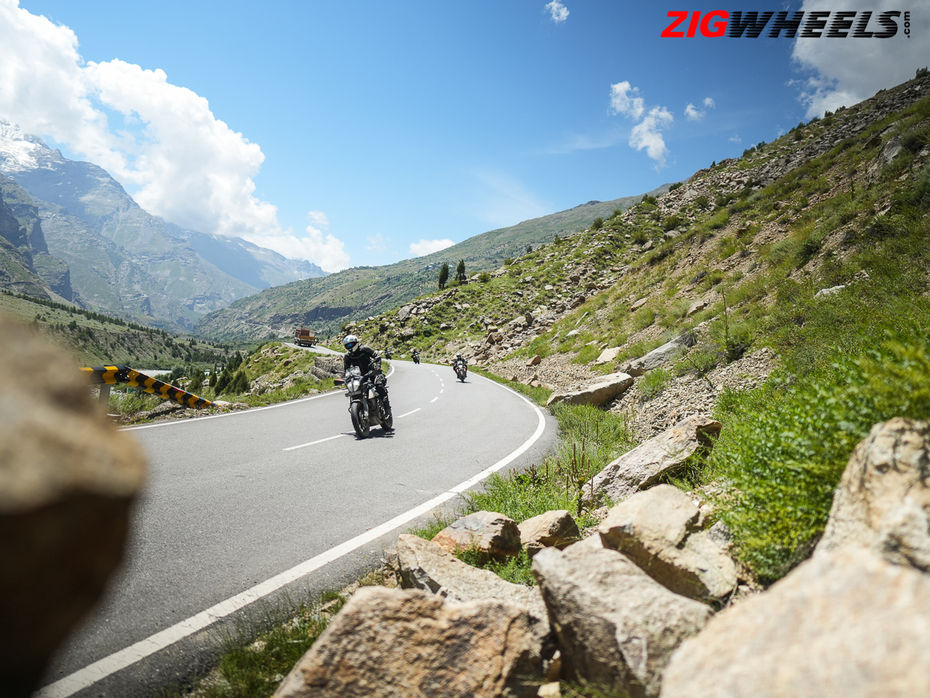
It really is one of the best routes you could hope for in the region. Packing in high altitude passes, challenging roads, beautiful Himalayan vistas, and long, hard days of riding into the next 12 days. This was certainly a trip we were all raring to start.
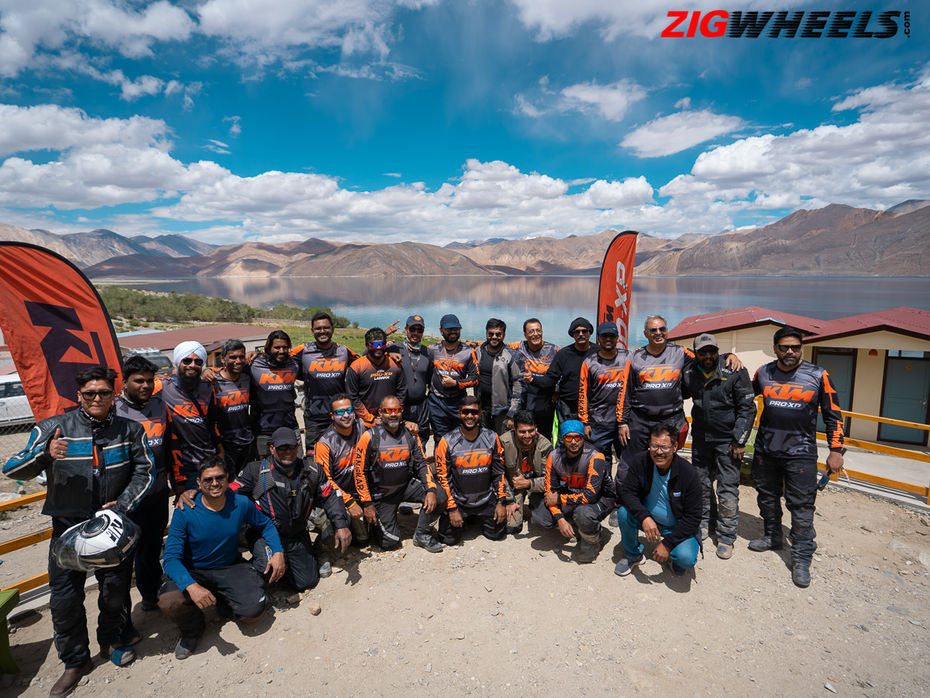
The 24 riders comprised an eclectic mix of Adventure riders from across the country. Many of them had ridden from their homes all the way to the start point at Manali. And while everyone came from different parts of the country and equally different backgrounds, it was almost uncanny how almost all of us were very similar in character. It’s like the KTM Adventure really does attract a very particular owner: calm, assured, and just like the name of the bike, proper adventure seekers!
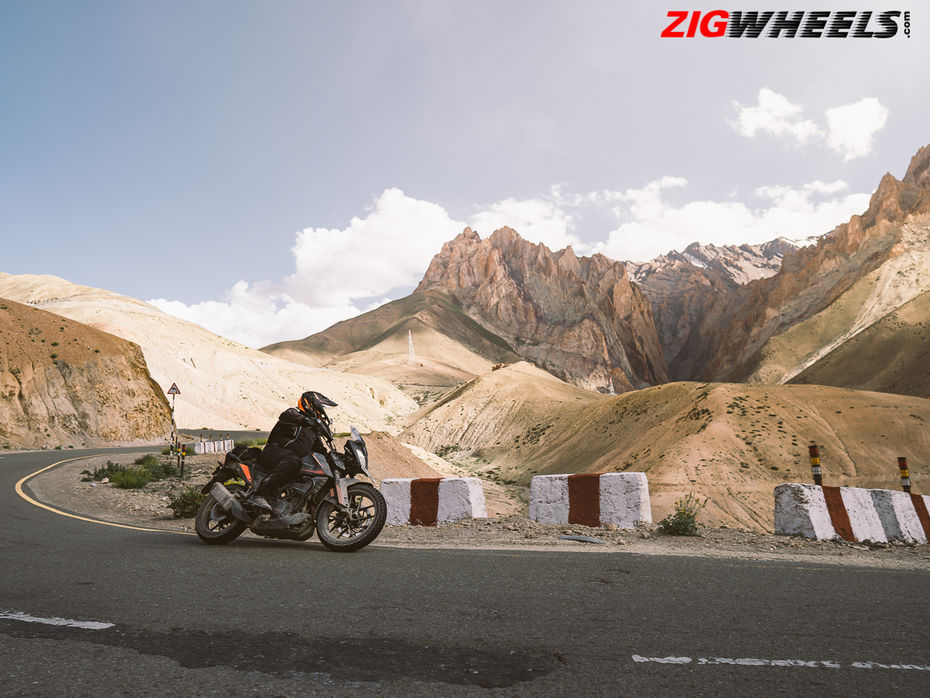
The majority of the group consisted of 390 Adventures but there were two 250 Adventures in the mix as well. As far as my ride for the trip is concerned, I started off with the 2023 390 Adventure SW, the very top of the 390 Adventure lineup, and then switched to the 390 Adventure X which sits at the opposite end of the lineup. Both bikes were perfectly suited to this terrain and riding both of them gave me a great insight into the pros and cons of both bikes that I’ll get into later.
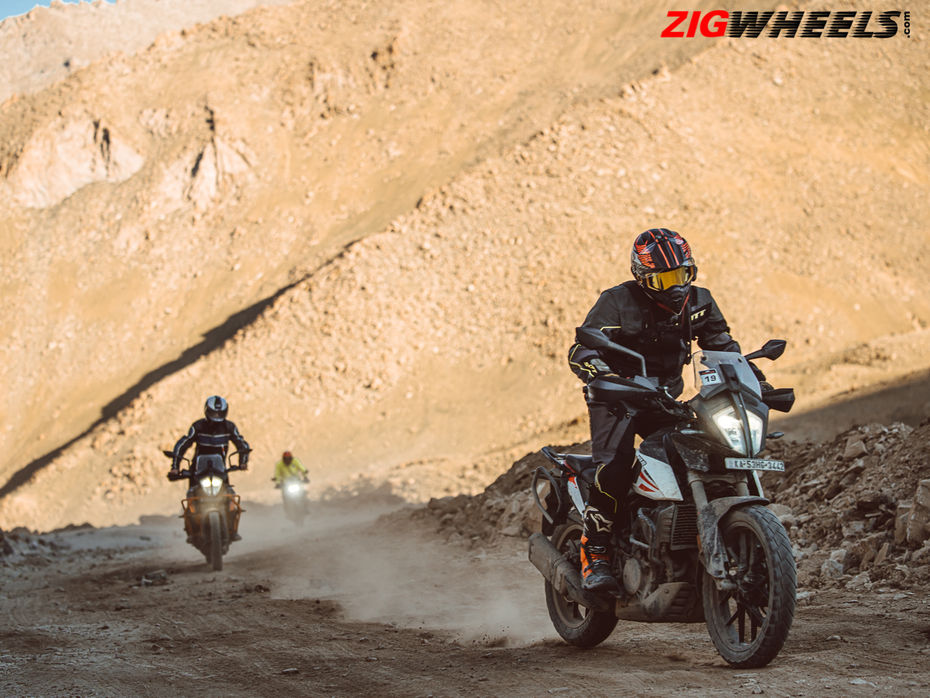
Day one was a very simple ride from Manali up to Jispa and with the opening of the Atal Tunnel this was a relatively short ride, four hours at most. A good experience for all the riders to get used to riding in a pack, familiarise themselves with the narrower mountain roads and get a small taste of what high altitude feels like. After lunch at Jispa we headed up the southern side of Shinku La pass for an acclimatisation ride and then came back down to Jispa for the night. This is because as you climb high, spend some time at a higher altitude (16500 feet) and come back down to a lower altitude, it allows the body to get used to the lack of oxygen at these altitudes.
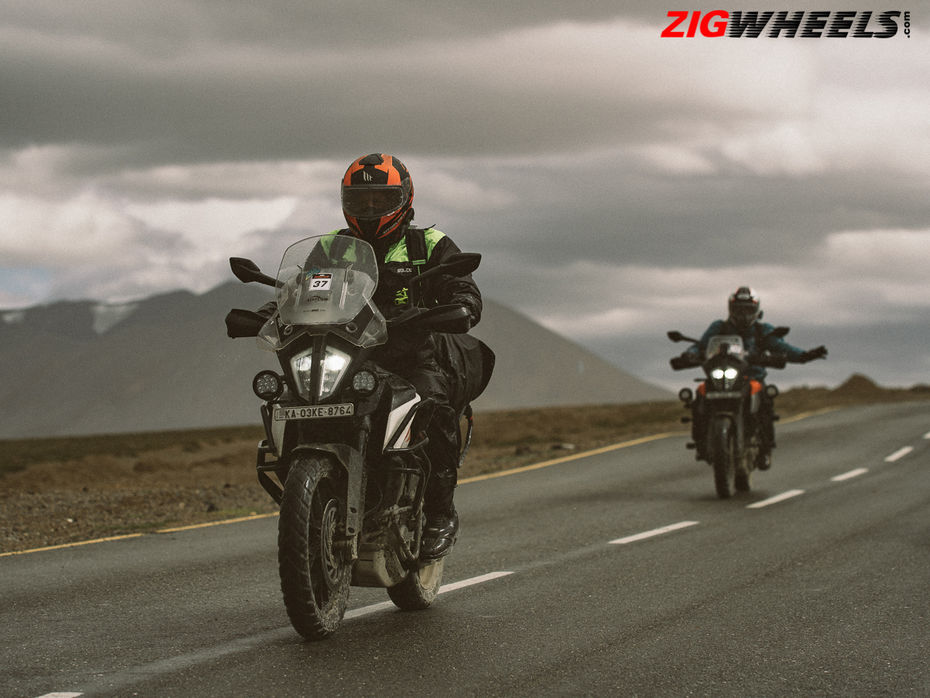
The next day brought on everyone’s first and proper test - 330 kilometres to Leh, crossing four high mountain passes along the way and spending a majority of the day above 13,000ft. The day was going well and we had made it to lunch time before I started feeling a little out of sorts. I was completely drained of energy and barely able to make the walk to the buffet table from where I was seated. I also had a good 180 kilometres of riding left to do before reaching Leh.
Things were not looking good for me, a combination of a cold, which had then caused improper sleep for the previous few nights, was enough to upset my apple cart. And post lunch I was barely able to stay warm on the bike. I was also mentally and physically exhausted and at this time I took the hard decision to get off the bike. Hard because sometimes you don’t want to admit defeat, you don’t want to show weakness, you just want to continue. But at these altitudes and on these roads, it can lead to acute AMS, loss of concentration, blacking out; far worse consequences than losing face amongst your peers.
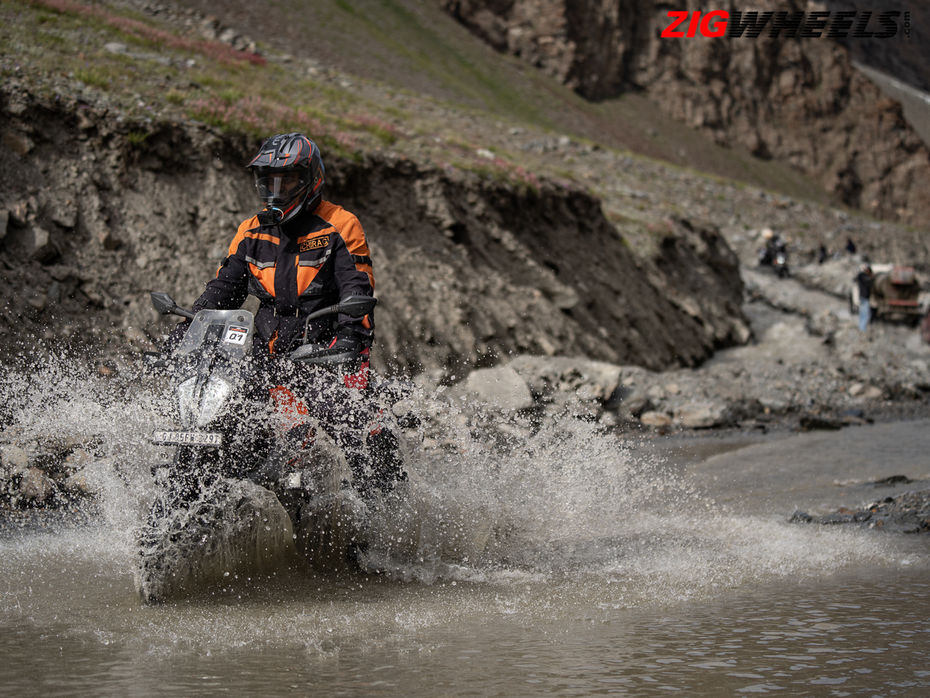
Thankfully, KTM conducts this ride with the best possible backup, that includes a doctor, supplementary oxygen, an ambulance, and multiple support vehicles. This meant that my bike could be loaded up, while I was packed into a car and put on oxygen, allowing me to recover on the way back to Leh. The itinerary included a rest day the next day so I could sit back, kick up my feet, and recuperate for the rest of the trip.
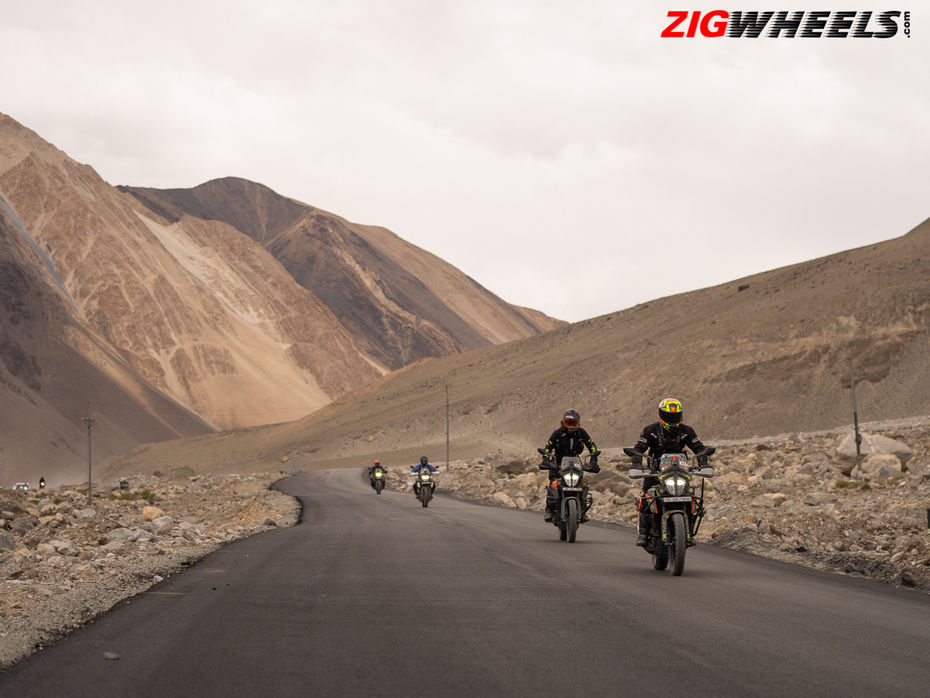
After a couple of days' rest in Leh, the group was ready to move on towards the Kargil Valley. To ensure I was properly rested, I even opted out of the day ride to Pangong to further recharge my batteries and now I was raring to get back on the bike. And what a day to get back on the bike it was! It started off with an off-road training session with lead riders Varad More and Sangram Patil, and then we were let loose on a kilometre-long dirt track to put to test what we had just learnt.
Post the off-road experience, the rest of the ride to Kargil was on some of the nicest winding blacktop we saw on the whole trip. Those hundreds of kilometres disappeared so fast that we were in Kargil way before our tyres, bikes, or backsides had started to complain.
The next day’s ride was a 50/50 split between blacktop and broken roads, all the way to Padum. We were now entering the fabled Zanskar Valley. The roads, vistas and mountains were all changing shape and hue constantly. For me the highlight of the day was coming around a corner and catching sight of the magnificent Drang Drung Glacier, majestically working its way down the valley in front of us,
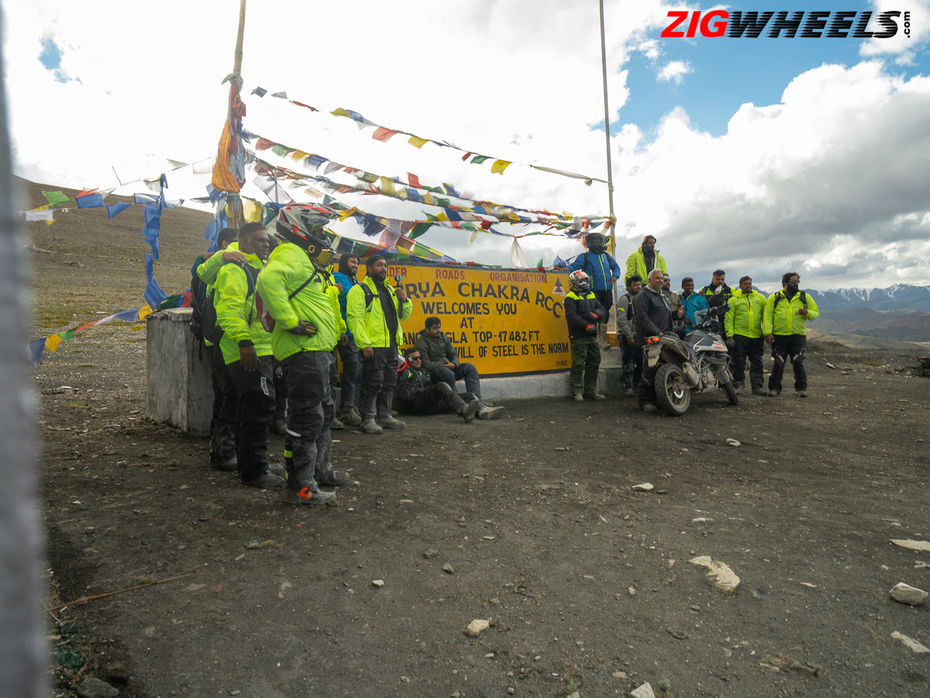
Padum was the second designated rest stop of the trip, and so in the evening we took the time out to recharge our spirits in the only way we knew how: singing, storytelling, and letting off steam. We were two-thirds through our Himalayan adventure.
The next afternoon the group took a ride up the side of a mountainside near Padum with two goals in mind. The first priority was sharpening our newly learnt skills over broken surfaces, and the second – and more socially conscious reason – was cleaning up all the plastic we could find on the trail which is a popular hiker route to the higher mountains.
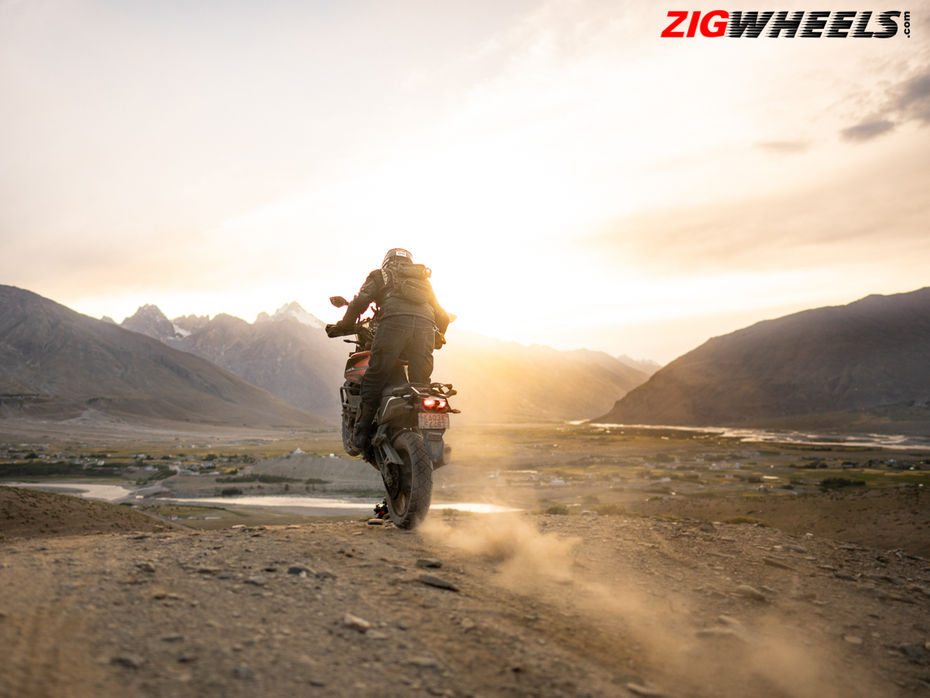
The next day was the longest day of our trip and one of the most challenging. In addition to having only 20 kilometres of tarmac, the remaining 150 kilometres was just broken roads, no roads, and ‘fesh-fesh’ – deep, fine sand – which is the equivalent of quicksand to the motorcycling world. Topping off that experience was the longest water crossing that was over 500 metres long. Finally, we would ascend Shinku-La pass, the same 16,500-foot pass we tackled on day one, just that this time we would be ascending from the northern side and heading back to Jispa for the night.
The off-road bits and the fesh-fesh were conquered almost without a thought with our newfound skills, and that brought us to the mystical Gonbo Rangjon, a spiritually significant mountain for the people of the Zanskar region, and its beauty and majesty really made all the toils of the previous days riding completely worth it.
The final push was made by all to get over the water crossings. They are fun, exciting and a pain if you fall in, something you don’t want to do with a chilly mountain pass immediately after. Everyone managed to get through unscathed, even though some were a little wetter than the others.
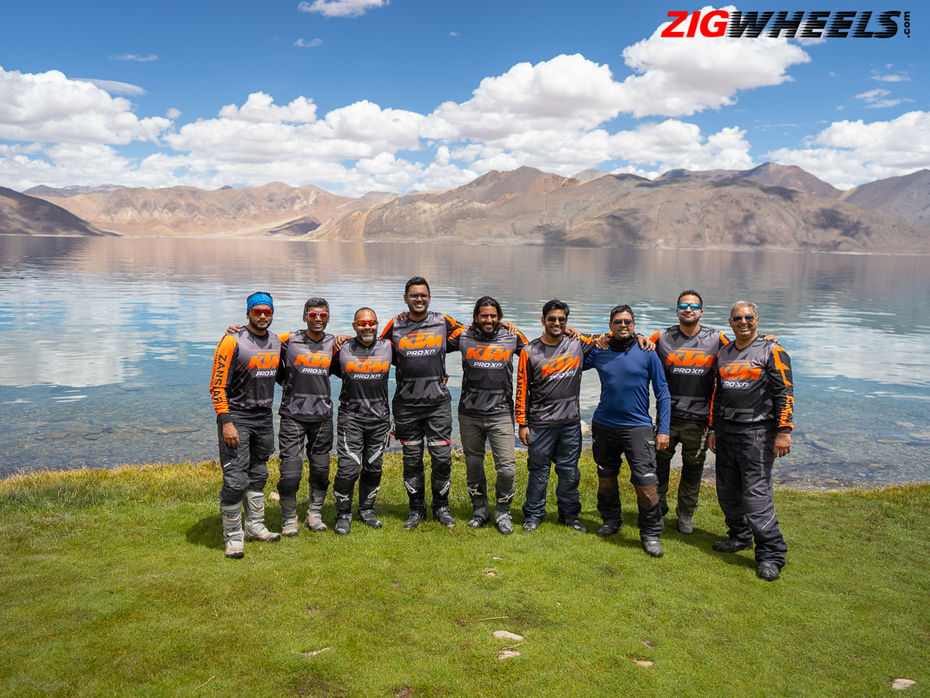
The beauty of this area is preserved so far by the fact that it’s such a remote area. In fact the journey from Padum to Jispa isn’t even on the maps. Though a trail/broken road exists it doesn’t show up on Google maps. This has ensured that a visit to the Zanskar Valley is earned. But for how long, is the question!
On our trip, almost every route, including the last unmarked stretch, was being metalled and paved. Padum, a small town in the middle of the valley, is gearing up for an inflow of tourists, and new hotels are being built. Progress has reached this remote area of ‘nowhere’ too. And so if you plan to experience it, do so as soon as you can, before even the unspoiled is trodden over.
250 or 390, Adventure X or SW, every KTM bike was perfectly at home in the Himalayas. For me the SW was a beautiful machine; the adjustable suspension, riding modes, and spokes wheels meant it handled the rough stuff like a champ. The adjustable suspension allowed me to easily set up the bike to carry all my luggage and still keep the handling nimble as ever. A simple choice for the more advanced rider. The traction control was the only gripe I had, and I wish there was an option to turn it off completely. The Adventure X, on the other hand, is just as sweet. It doesn’t get the fancy bells and whistles of the SW, but still has a comfortable suspension setup, and the lack of rider modes or traction control made no difference to my progress through the water crossings or tricky sand. And it’s a great budget option to start off your adventure journey.

The last day was a simple ride from Jispa to Manali, a short three-hour ride that was just enough time to reminisce on the ups and downs, both literally and figuratively of the eleven days that had so swiftly gone by. This trip had it all, and what a beautiful experience it was. New friends were made; relationships – both interpersonal and man-machine – were forged and made more meaningful with this experience; and I can bet good money that I’m not the only one to feel this way!
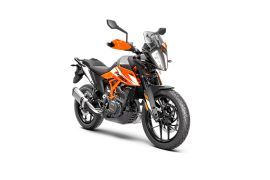

Ceat SportRad Tyres 5,000km Review, on KTM 390 Duke

Raida AirWave Motorcycle Riding Gloves Review

2024 KTM 390 Duke Road Test Review: Unleashing The Madness

2024 KTM 390 Duke First Ride Review - Best 390 Duke Ever!

Touring On The Royal Enfield Himalayan 450: 5 Things I Learnt

All-New Royal Enfield Himalayan Review: An Adventure Redefined

Triumph Speed 400 First Ride Review: India’s Best 400cc Naked?
 KTM Duke 390
KTM Duke 390
 Royal Enfield Himalayan 450
Royal Enfield Himalayan 450
 BMW G 310 GS
BMW G 310 GS
 Triumph Speed 400
Triumph Speed 400
 Bajaj Dominar 400
Bajaj Dominar 400
India's largest automotive community
 KTM Duke 390
Rs. 3.13 Lakh
KTM Duke 390
Rs. 3.13 Lakh
 KTM 200 Duke
Rs. 2.03 Lakh
KTM 200 Duke
Rs. 2.03 Lakh
 KTM 125 Duke
Rs. 1.81 Lakh
KTM 125 Duke
Rs. 1.81 Lakh
 KTM 250 Duke
Rs. 2.25 Lakh
KTM 250 Duke
Rs. 2.25 Lakh
 KTM RC 390
Rs. 3.21 Lakh
KTM RC 390
Rs. 3.21 Lakh